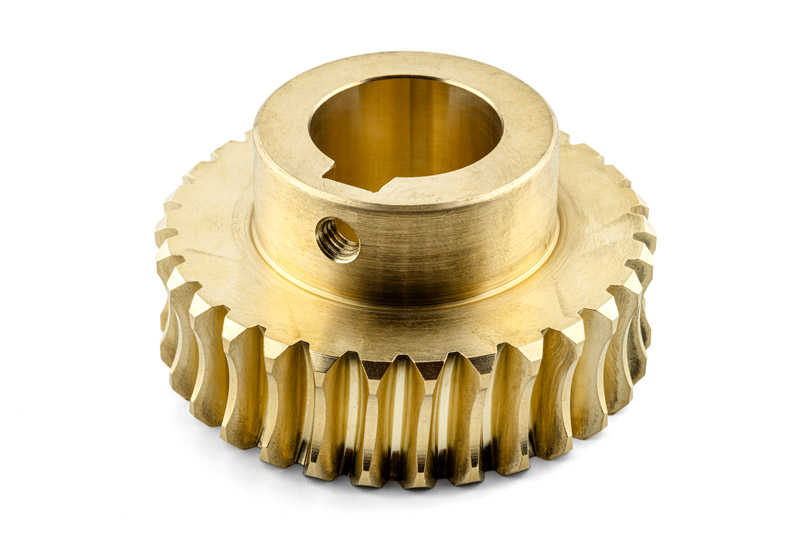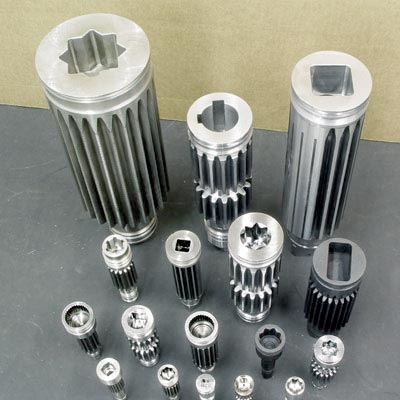Broaching and Slotting
Mecal srl provides broaching (through holes) and slotting (blind holes) services to complete the requested products.
Broaching is a process which consists in forcibly passing a special tool (broach) into a hole, most often cylindrical, in order to progressively obtain the desired profile and size.
Holes of different shapes are obtained with this operation, from the simplest to the most complex ones.
Slotting, on the other hand, is a type of mechanical processing that obtains straight grooves of any shape through a rectilinear cutting motion starting from pre-existing holes.
What is broaching?
Broaching is a work phase that is carried out through the removal of chips using a tool composed of a series of cutting edges called “broaches”, which progressively remove the material until obtaining the profile and dimensions requested. Broaching lets you create complex profiles with extreme speed and precision. In practice, it consists in passing the broach through a pre-existing through hole to gradually obtain the desired shape and size while guaranteeing tight tolerances. Thanks to broaching, you can obtain square holes, keyways, complex profiles, etc. The broaching achievements of MECAL srl are distinguished by the precision and attention to detail with which they are performed. The machinery is periodically checked in order to always guarantee impeccable work.
What is slotting?
Slotting is a particular type of process similar to broaching, also carried out with chip removal, especially suitable for modifying the internal surfaces of a hole such as, for example, keyways, shaping or grooved profiles. It consists in obtaining vertical, straight or shaped grooves through the intermittent passage of a special cutting tool to gradually achieve the desired shape and size while maintaining tight tolerances, which is why this process finds its ideal application in the most varied fields of manufacturing and engineering sector. Slotting is performed with numerically controlled machine tools called “slotting machines” which work with a vertical or inclined rectilinear motion and, unlike broaching, it can be performed both in through holes (where the tool protrudes from the piece) and in blind holes (with the tool stopping at a pre-established depth) by repeating the operation continuously and increasing the cutting value at each pass.


